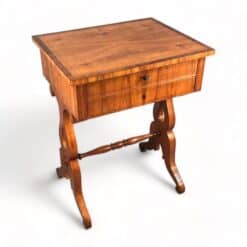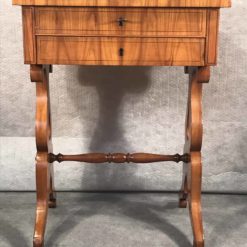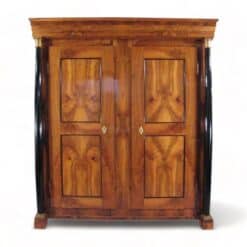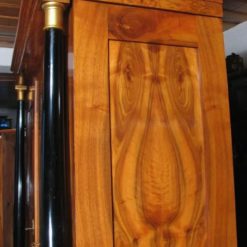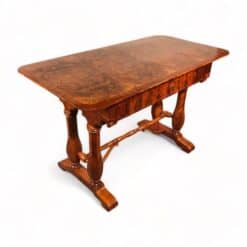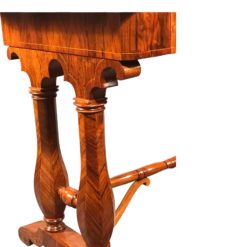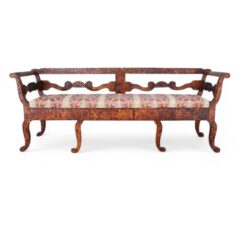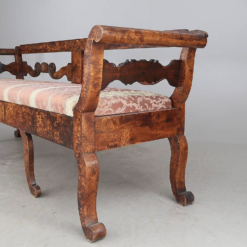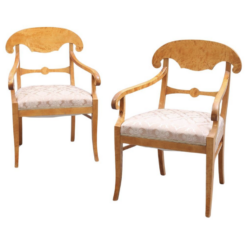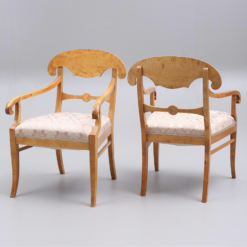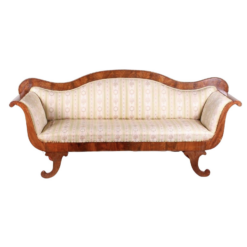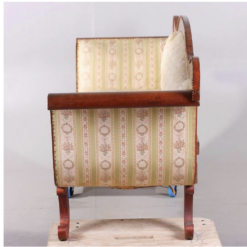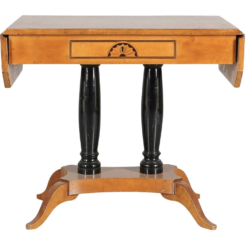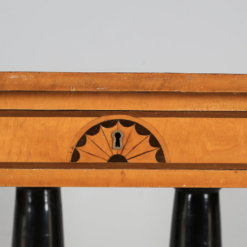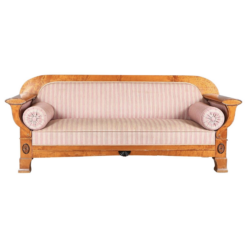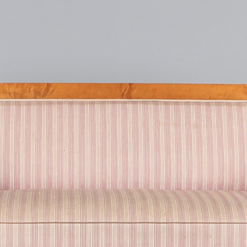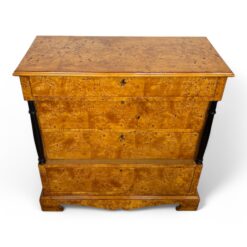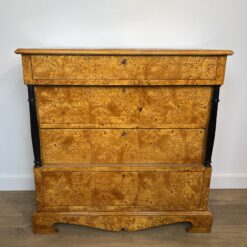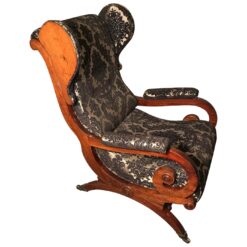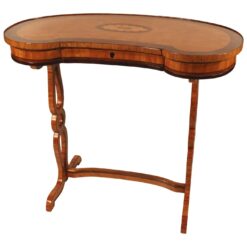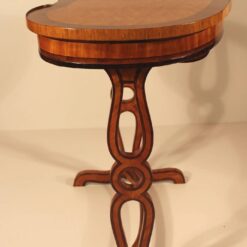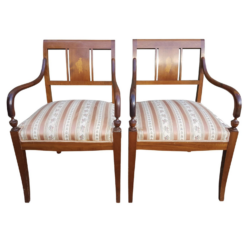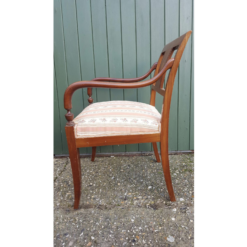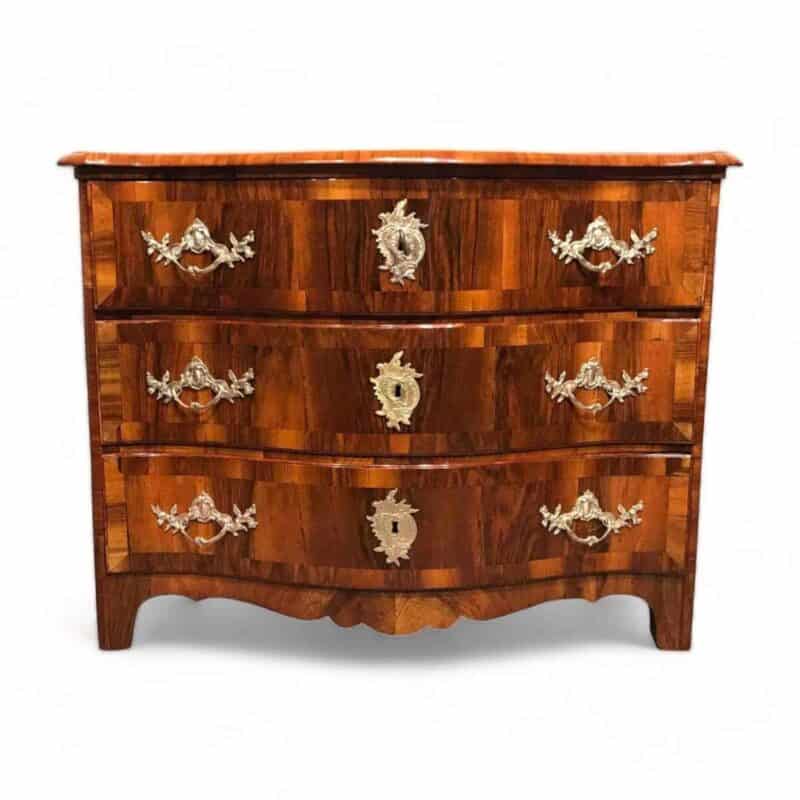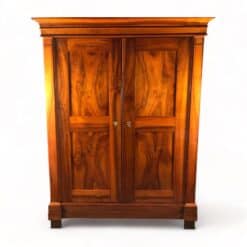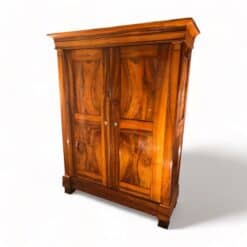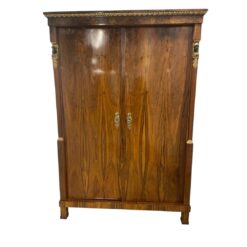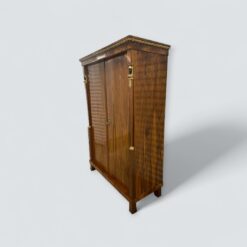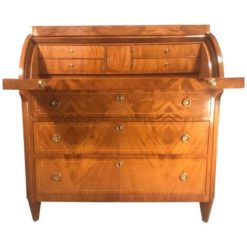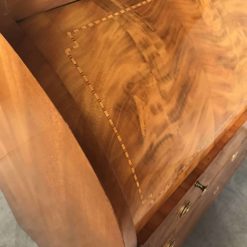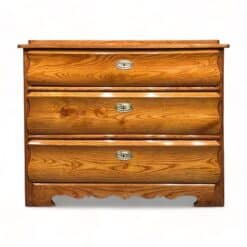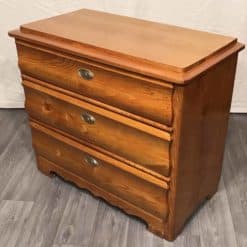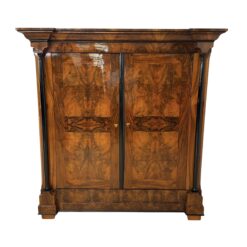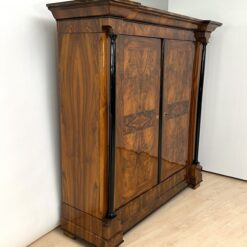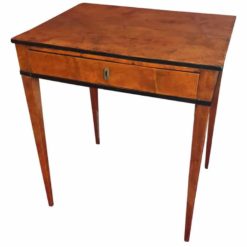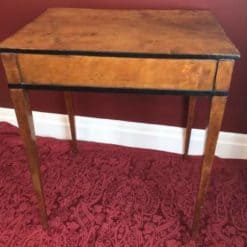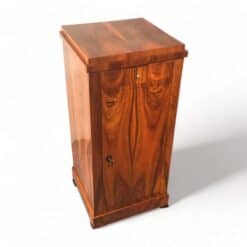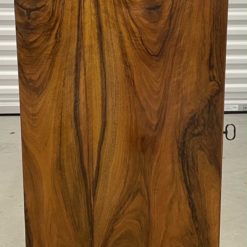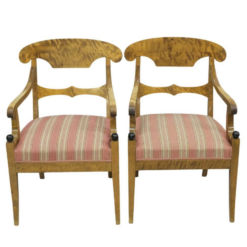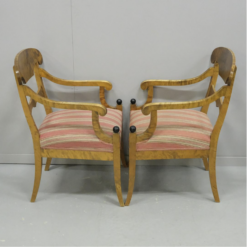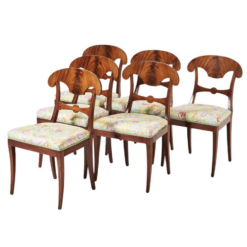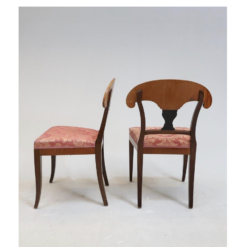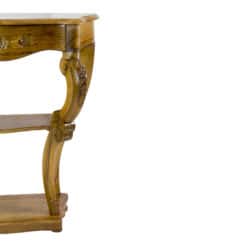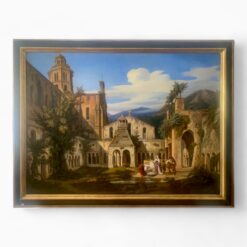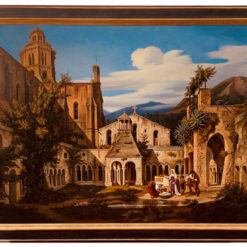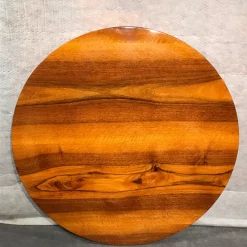Best Sellers
Furniture, Styylish History
The Evolution of German and Austrian Antique Furniture Styles
Navigating the Ages: The Evolution of German and Austrian Antique Furniture Styles
Welcome to the first post of a brand new blog series at Styylish, where we will be unpacking the history and evolution of antique furniture across Europe through the centuries.
Embarking on a journey through history, we first start with the story of German and Austrian antique furniture styles. From medieval simplicity to the refined elegance of the 19th century, these regions have birthed furniture pieces that embody craftsmanship and cultural evolution.
In this exploration, we delve into the unique features of antique chairs, tables, dressers, and cabinets, tracing how these elements evolved over time and contributed to the rich tapestry of German and Austrian antique furniture styles.
Medieval Roots: Functional Simplicity (500-1500 AD)
In the heart of the medieval period, German and Austrian antique furniture began as utilitarian marvels, crafted from sturdy oak and pine. Chairs, basic and armless, featured straight backs, showcasing the simplicity synonymous with antique furniture styles.
Tables, often trestle-based, exuded robustness, while dressers and cabinets, unadorned, served essential storage functions. However, intricate carvings were reserved for privileged settings. Therefore these early pieces set the stage for the antique furniture styles that would follow.
Medieval cupboards in Germany were typically crafted from durable oak and pine. Known for their robust construction, these cupboards featured simple designs with functional storage compartments and shelves. Additionally, cupboards had carved panels with the linen-fold motif or carved figures. While elaborate detailing was reserved for wealthier households, most German medieval cupboards prioritized practicality, showcasing the craftsmanship of the time.
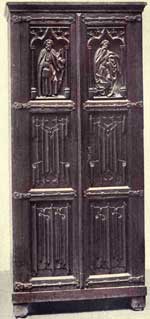
Renaissance Elegance and Ornate Detailing (14th-17th centuries)
As the Renaissance dawned, German and Austrian antique furniture embraced elegance and ornate detailing. Influenced by Italian styles, chairs gained comfort with upholstered seats and carved backs, embodying the opulence associated with antique furniture styles.
Tables, now with elaborate inlays, and dressers and cabinets adorned with rich carvings and veneers, showcased a newfound appreciation for craftsmanship and artistic expression. The use of rich materials such as walnut and ebony signaled a shift towards luxury and sophistication in antique furniture styles.
This Renaissance-style credenza was made by cabinetmakers who were inspired by medieval and Renaissance furniture style from oak wood. Therefore, it is an excellent example of pieces of the Renaissance period, that featured high-quality, hand-carved decorations.
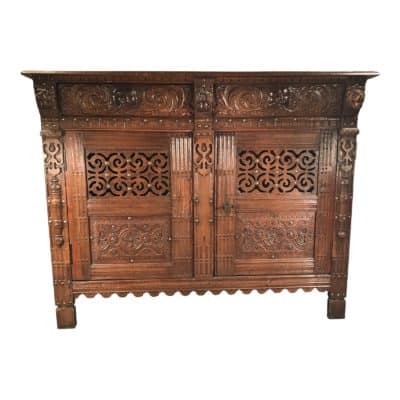
Baroque Opulence and Curvaceous Forms (17th-18th centuries)
The Baroque period ushered in opulence, leaving an indelible mark on German and Austrian antique furniture. Chairs became curvaceous and adorned with elaborate upholstery, while tables grew larger with intricate marquetry and cabriole legs, epitomizing the grandeur inherent in antique furniture styles.
Dressers and cabinets embraced dark woods like mahogany, featuring bold moldings and ornamental hardware. Baroque antique furniture exuded a sense of luxury and extravagance that resonates through the annals of time.
This Baroque wing back chair originated from Germany around 1760, and showcases the grandeur and craftsmanship of the Baroque era. Crafted with meticulous attention to detail, this unique original chair boasts a beautifully carved walnut frame. The intricate floral and acanthus decorations add an ornate touch, elevating its aesthetic appeal. Further, the wingback design offers a sense of privacy and coziness, making it a perfect spot for relaxation or indulging in a good book.
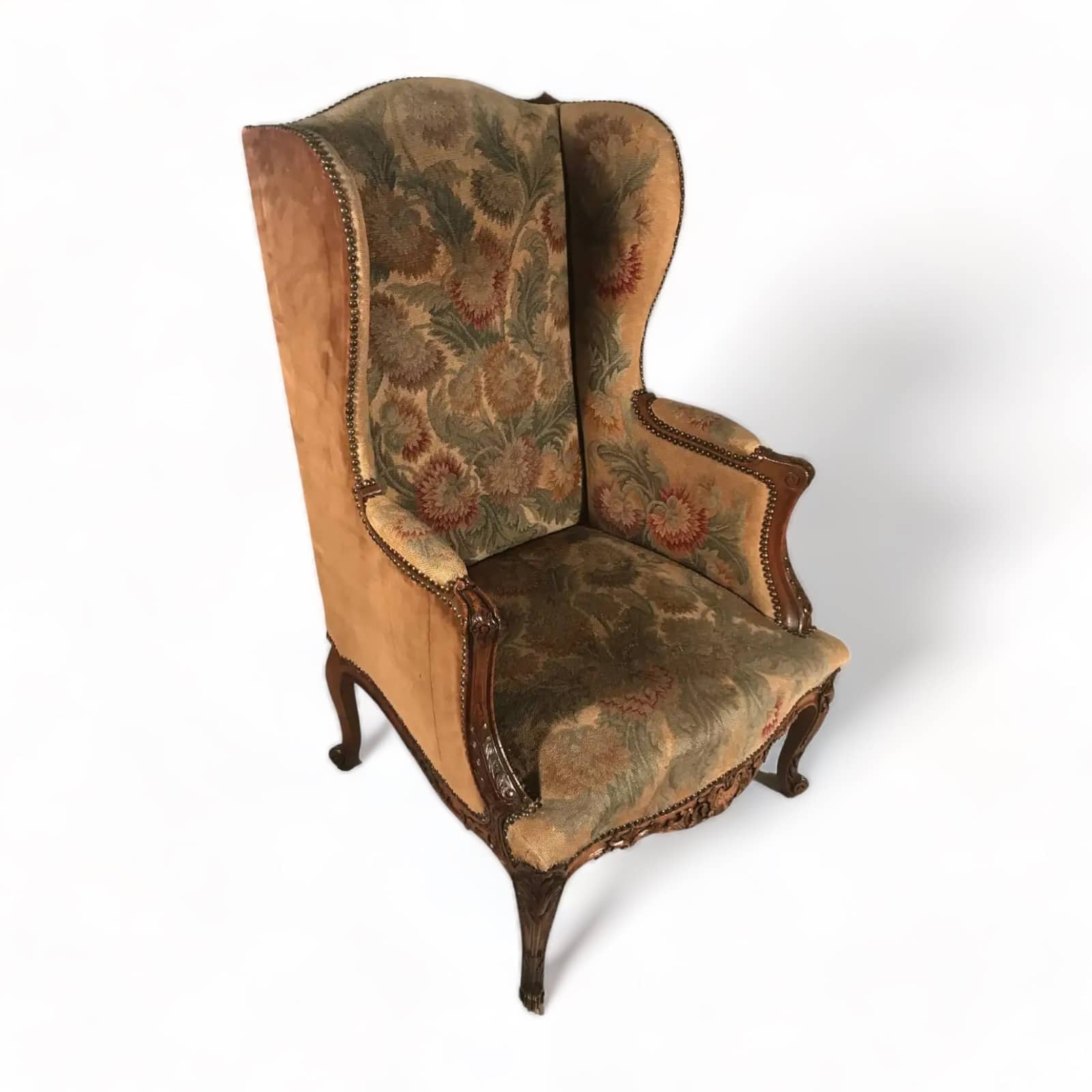
Also available on Styylish is this Baroque table. One of the key features of this table are its remarkable spiraling legs. Joined together by a curved stretcher, they lend the entire table a completely unique personality that is sure to pop out in every room it occupies. The table top has an insartia that depicts Roman weapons and armor.
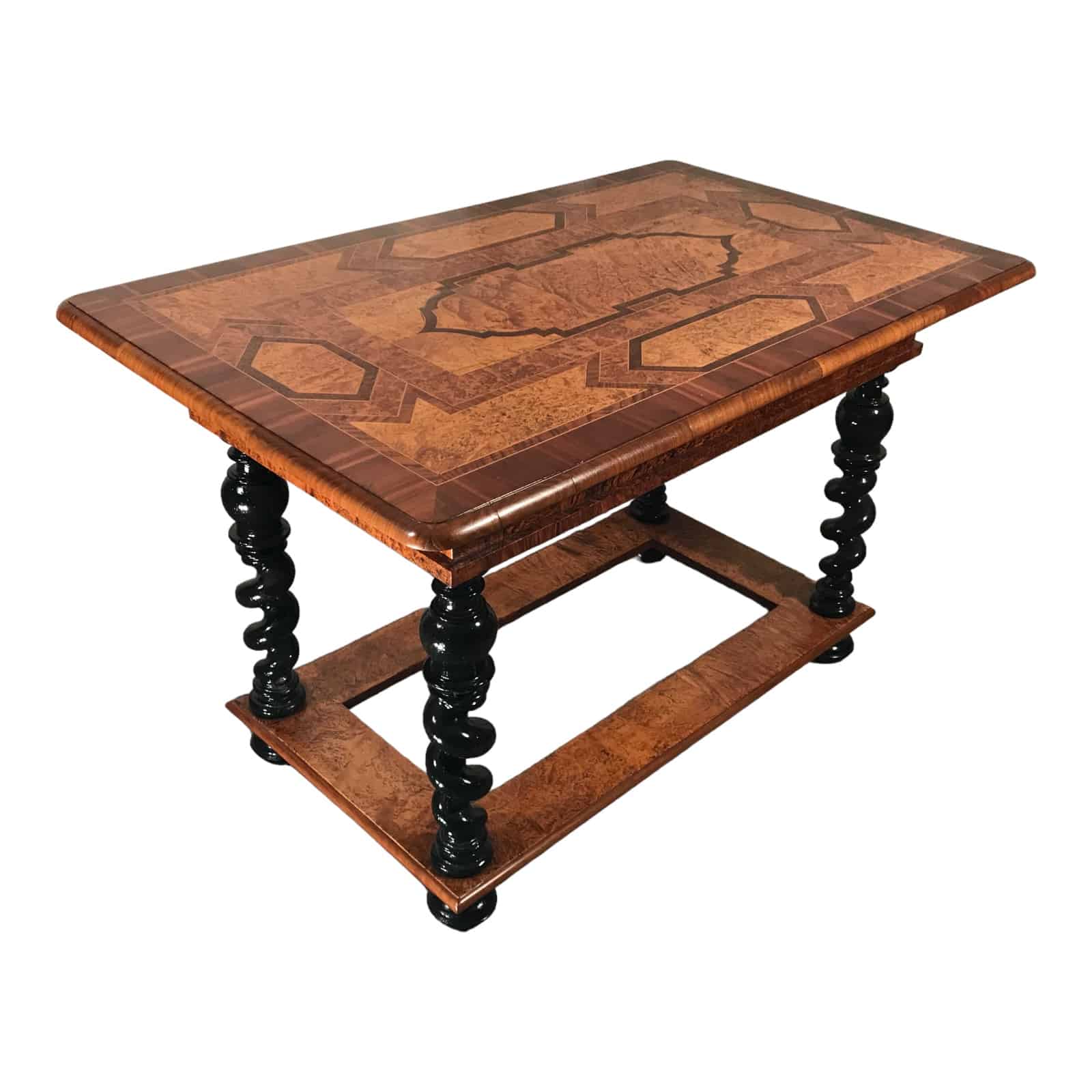
Rococo Grace and Lightness (18th century)
The Rococo era brought forth a departure from Baroque excess, introducing a more delicate and graceful aesthetic to German and Austrian antique furniture. Cabriole legs, asymmetrical shapes, and intricate floral motifs became the hallmarks of this period. Chairs displayed sinuous curves, tables featured scalloped edges and marquetry inlay, and dressers and cabinets retained a sense of elegance with serpentine shapes. Rococo antique furniture embodied a lighter, more whimsical style that appealed to refined sensibilities.
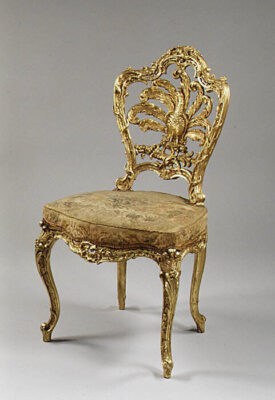
This gilded Rococo-style chair at the Metropolitan Museum demonstrates the beauty, opulence and whimsy of the pieces of this era.
Neoclassical Simplicity and Symmetry (Late 18th-early 19th centuries)
The Neoclassical period heralded a return to classical influences, emphasizing simplicity, symmetry, and clean lines in German and Austrian antique furniture. Straight legs, geometric shapes, and a subdued color palette defined this era. Chairs featured classical motifs, tables became more functional, and dressers and cabinets adopted lighter woods like beech and birch. Neoclassical antique furniture marked a shift towards functionality over excessive ornamentation.
This pair of Neocassical chairs hail from Germany and were crafted between 1810-1820. A detailed openwork backrest characterizes their timeless Neoclassical design, adorned with a delicate palmette motif. Additionally, they now feature a refurbished upholstery and fabric, ensuring both comfort and aesthetics align with contemporary standards.
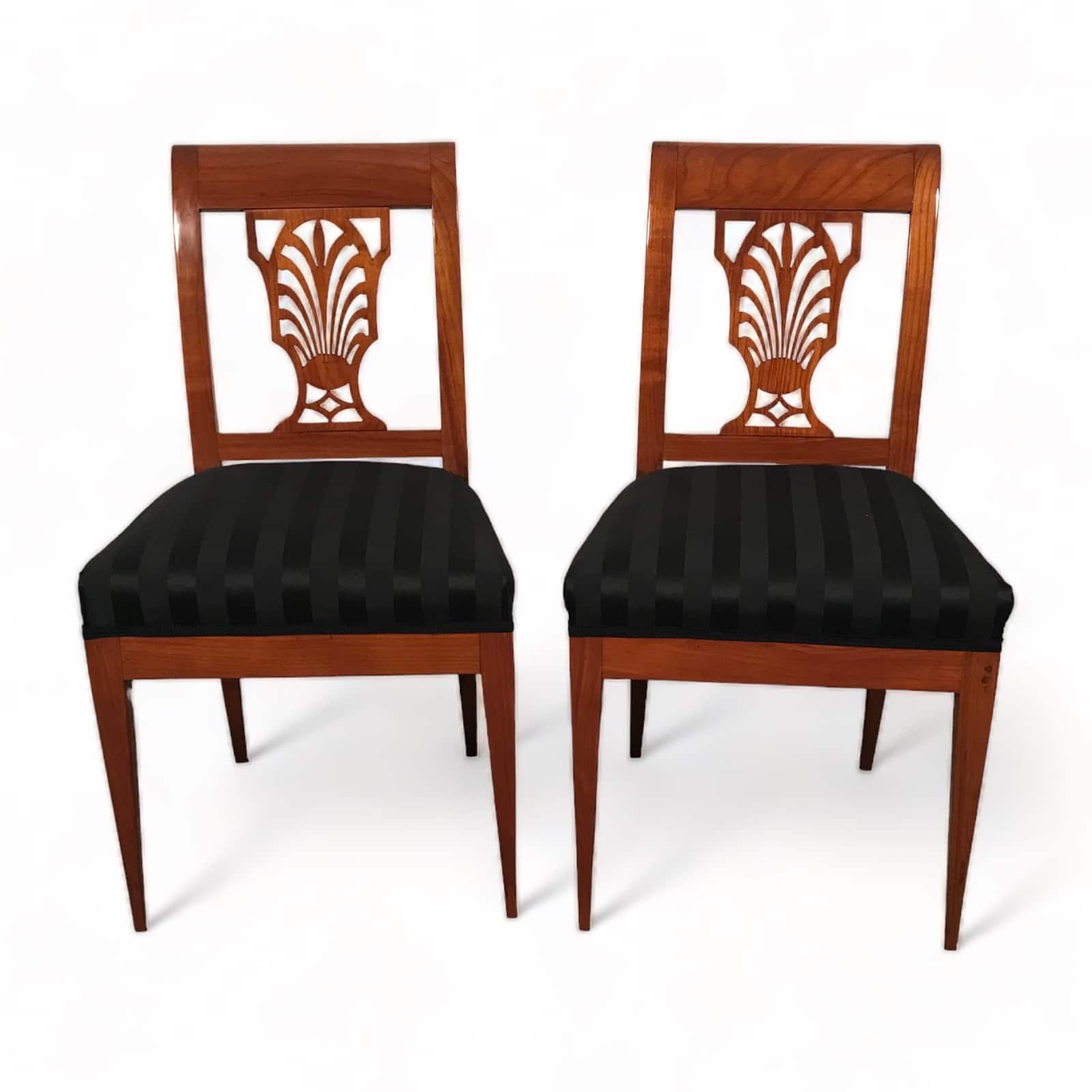
This Neoclassical secretary desk available on Styylish showcases a bright cherry veneer on hard and softwood. The desk is in excellent restored condition with shellac hand polish. The desk contains the original brass fittings, one original key, and iron locks.

This Neoclassical extendable dining table dates back to the first half of the 19th century. The four taper legs stand on original brass castors. When the table is extended two additional legs fold out to support the weight and size.
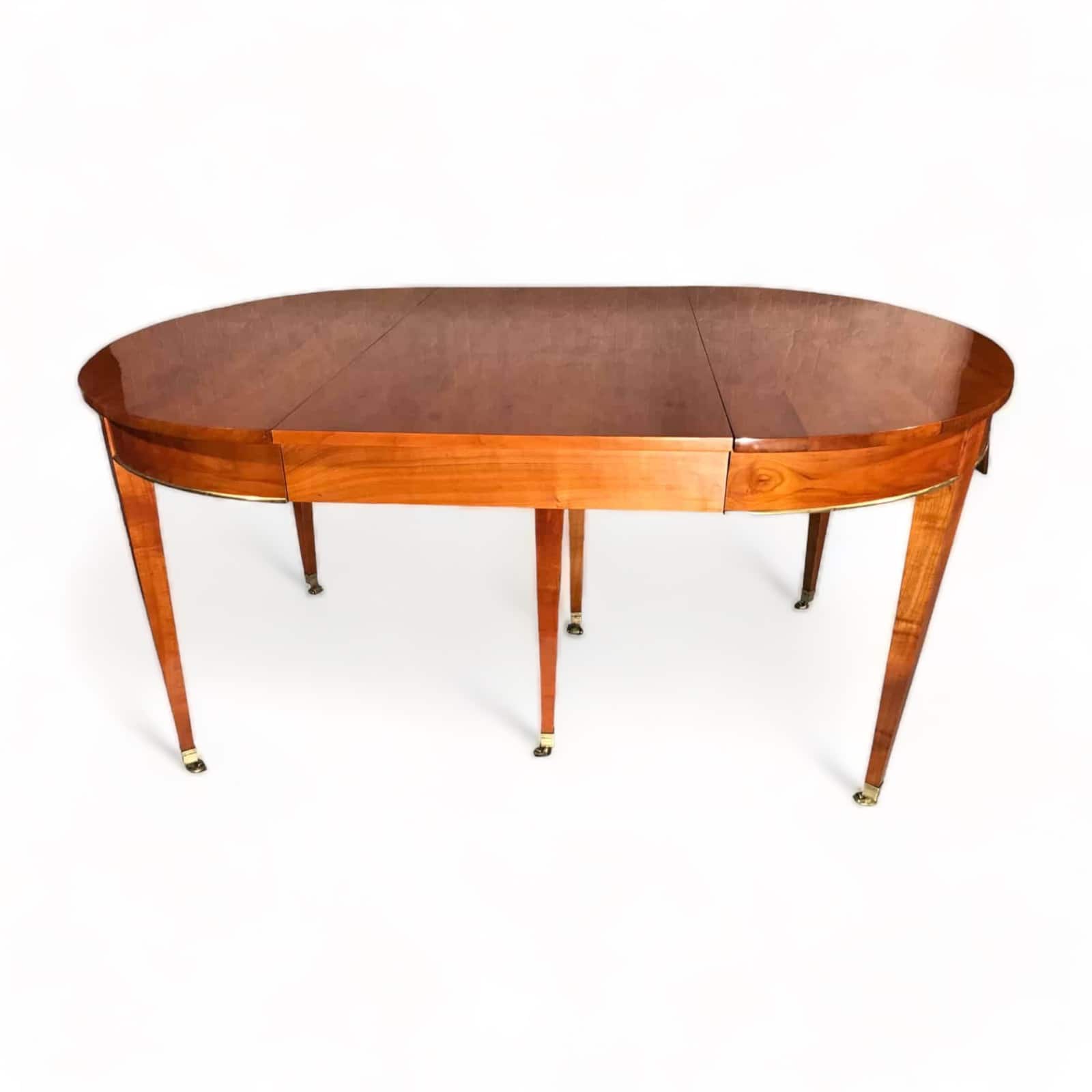
Biedermeier Clarity and Functionality (Early to mid-19th century)
The Biedermeier period witnessed a move towards clarity, functionality, and comfort in German and Austrian antique furniture. Clean lines, lighter wood tones, and unadorned surfaces became prevalent. Chairs embraced simple, geometric shapes with upholstered seats, and tables became more intimate. Dressers and desks favored the natural beauty of wood grain over elaborate detailing. Biedermeier antique furniture reflected a growing middle-class taste for simplicity and practicality.
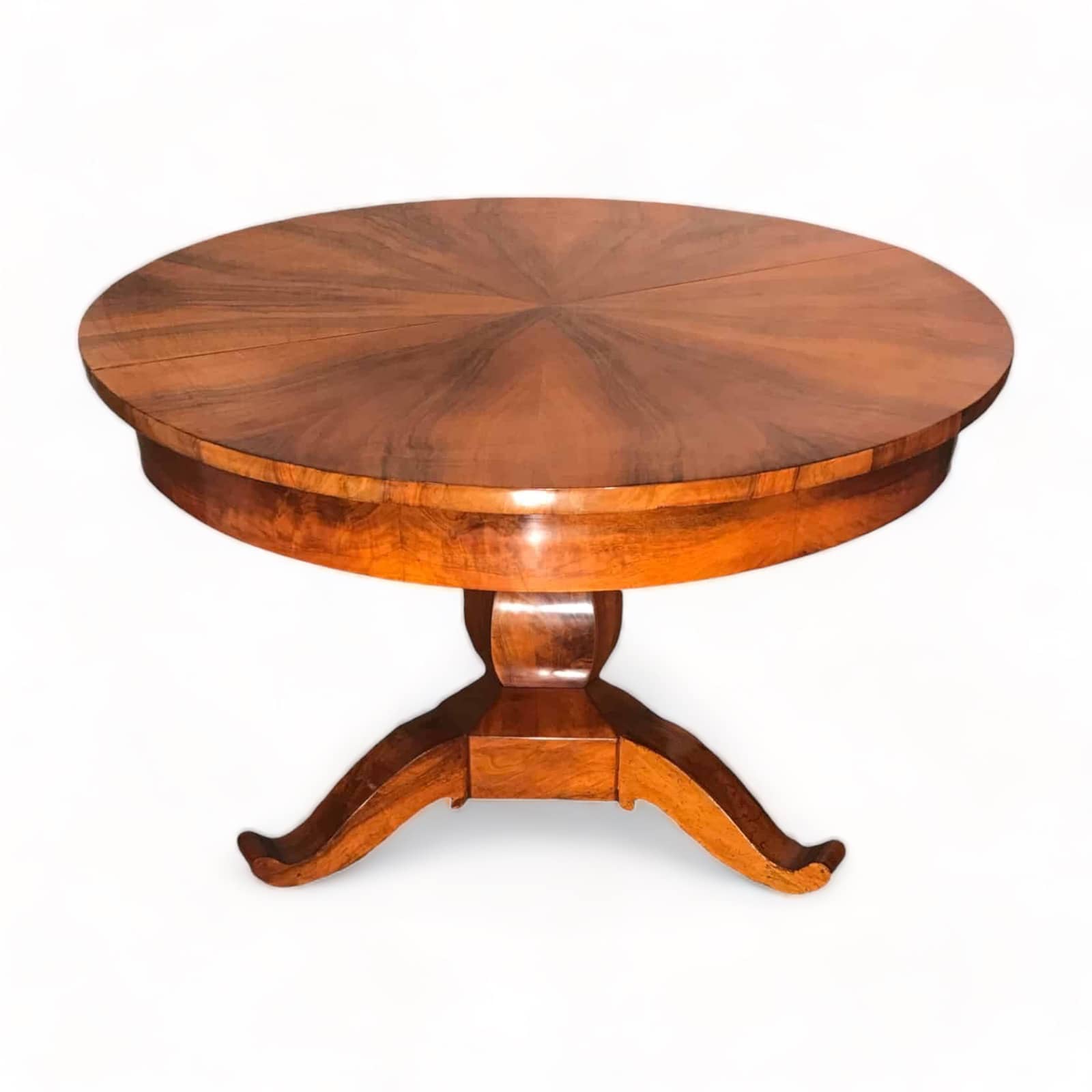
Discover the timeless beauty of our exquisite Austrian Biedermeier table crafted in walnut in 1820 Vienna. This remarkable piece boasts an elegant fluted central column that gracefully stands on an octagonal base. Further, the tabletop features a stunning piecrust veneer adorned with a central star inlay, creating a truly captivating design.
This unique pair of antique armchairs dates back to around 1820-30 and comes from the northern part of Germany.
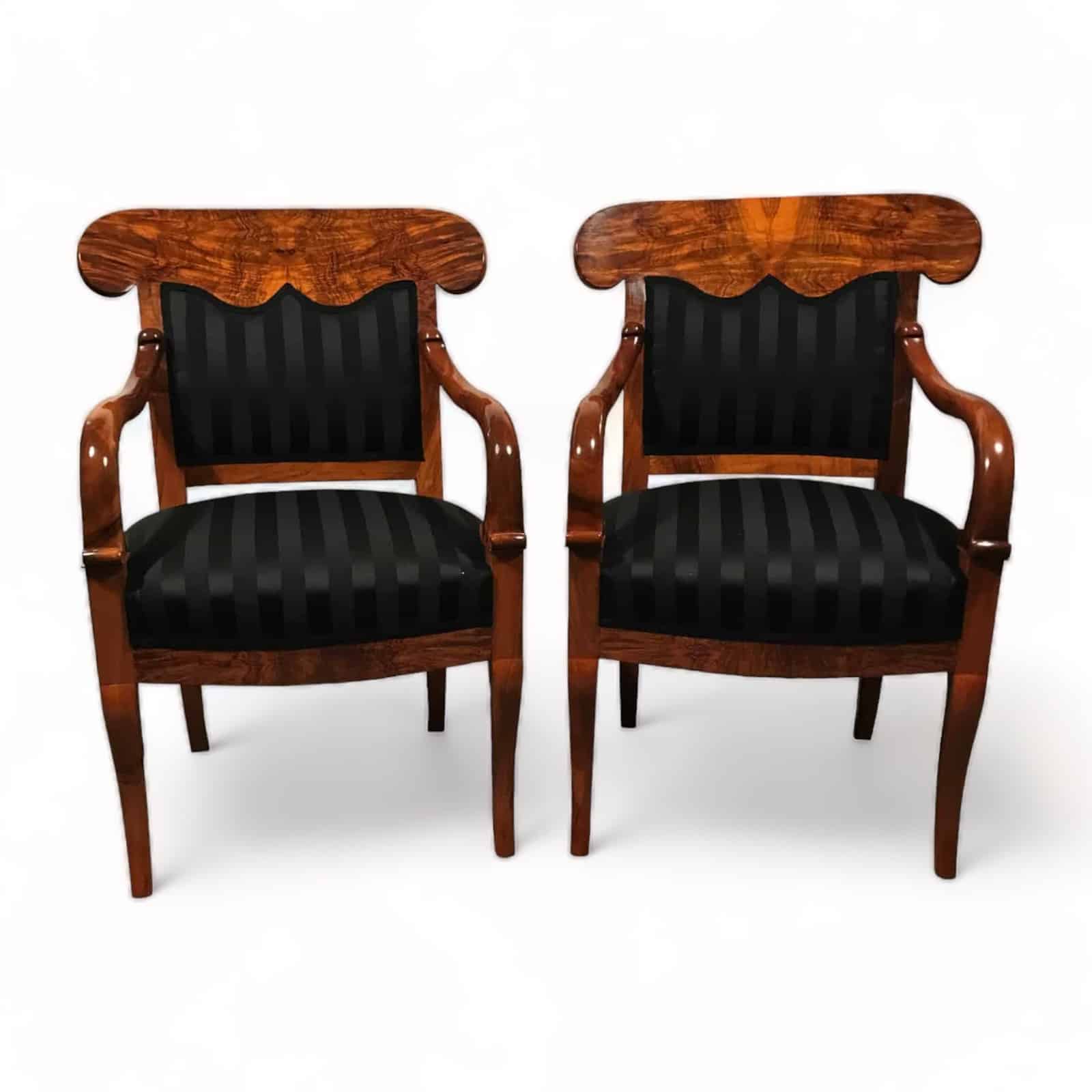
The northern German Biedermeier is stylistically connected to the so called Golden Age in Denmark. The Danish Golden Age is the term for a period of Danish art and cultural life from approx. 1800 to approx. 1850.
A Legacy of Craftsmanship in German and Austrian Antique Furniture Styles
The legacy of German and Austrian antique furniture styles is a testament to the enduring craftsmanship and cultural influence spanning centuries. Today, whether it’s the ornate detailing of a Baroque cabinet, the clean lines of a Biedermeier chair, or the timeless elegance of a Neoclassical table, antique furniture styles continue to captivate collectors and enthusiasts alike.
Thus, as we explore these pieces, we not only witness the evolution of antique furniture design but also gain insights into the cultural, social, and artistic dynamics that have shaped these remarkable pieces throughout the ages.

